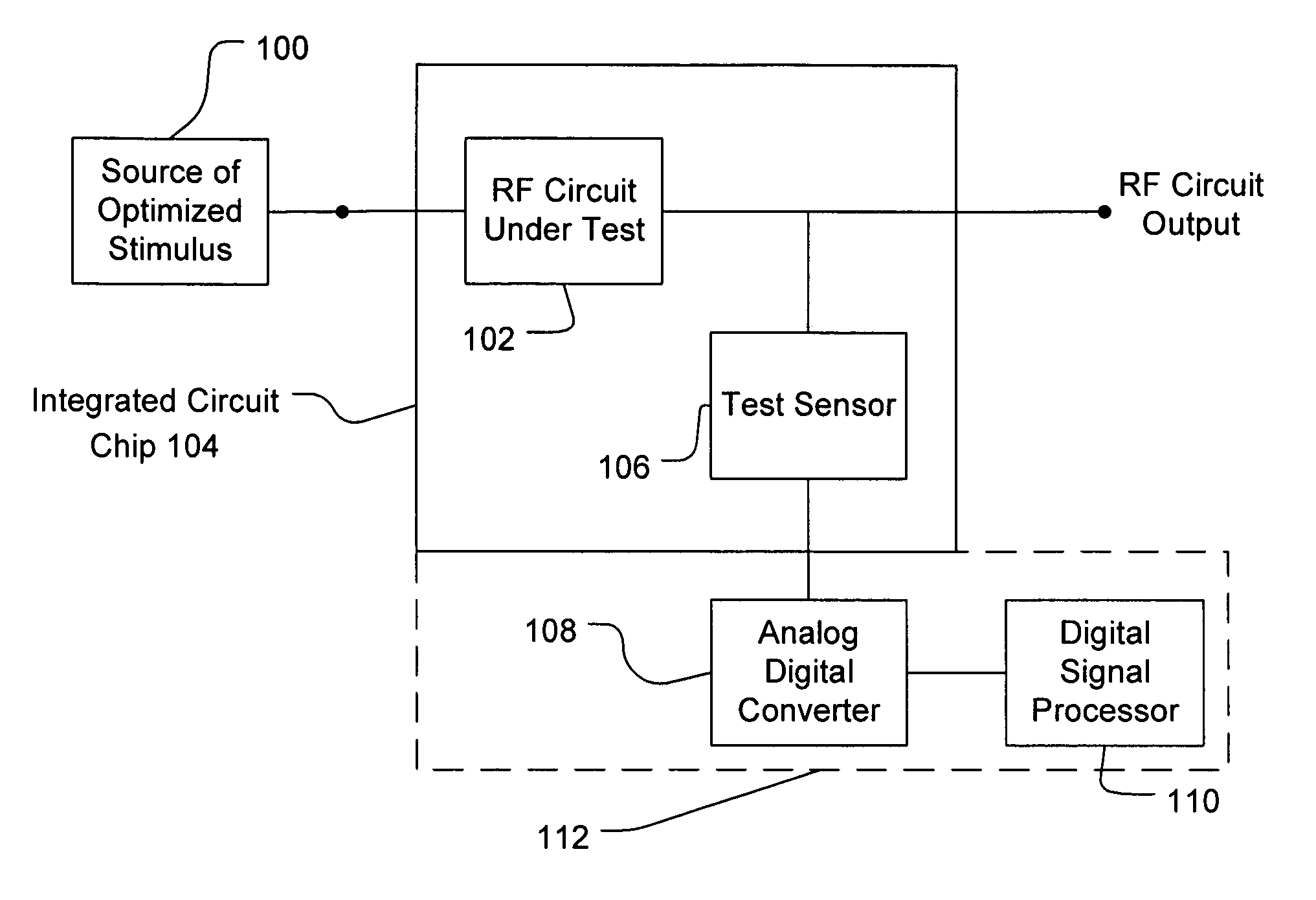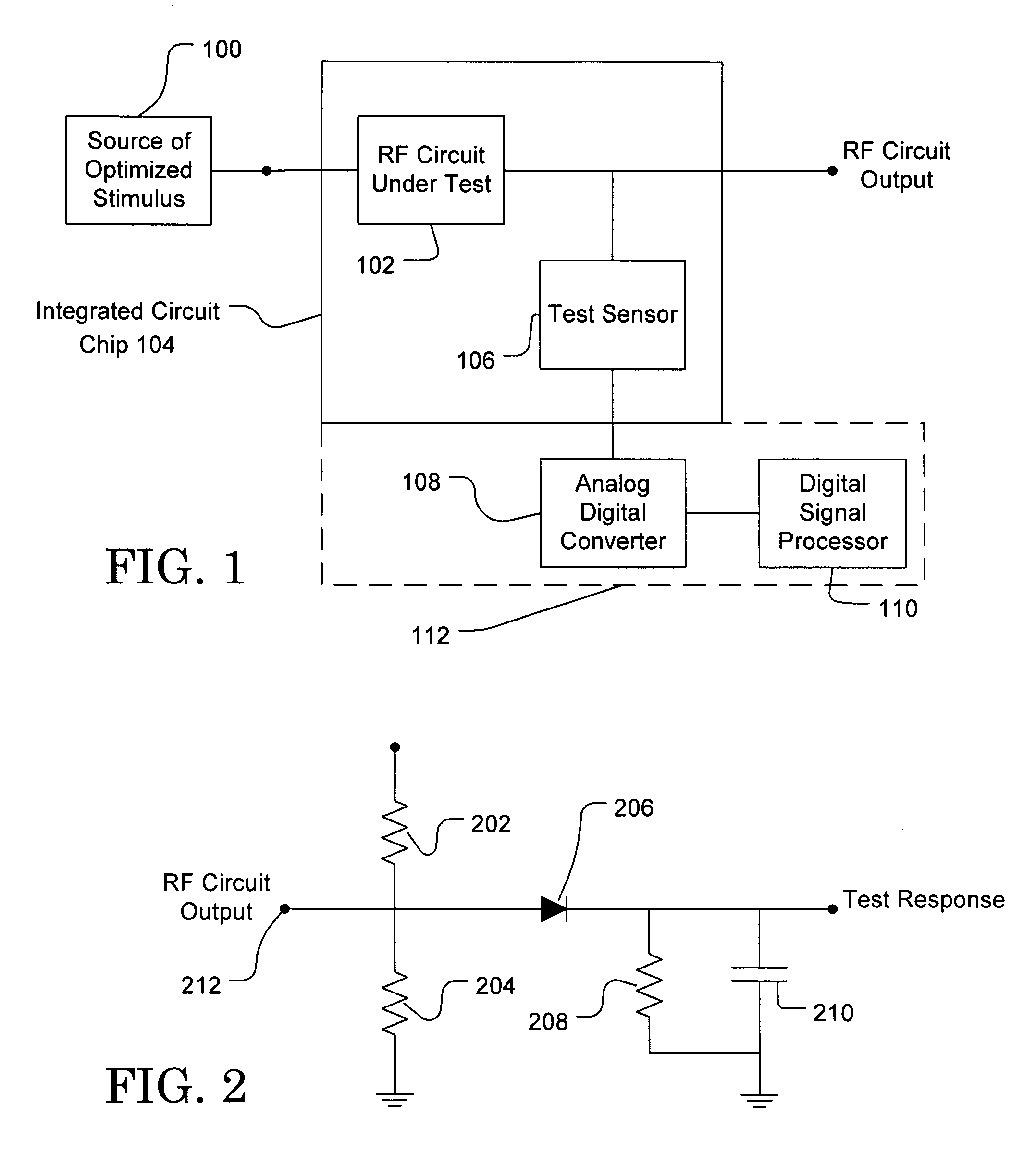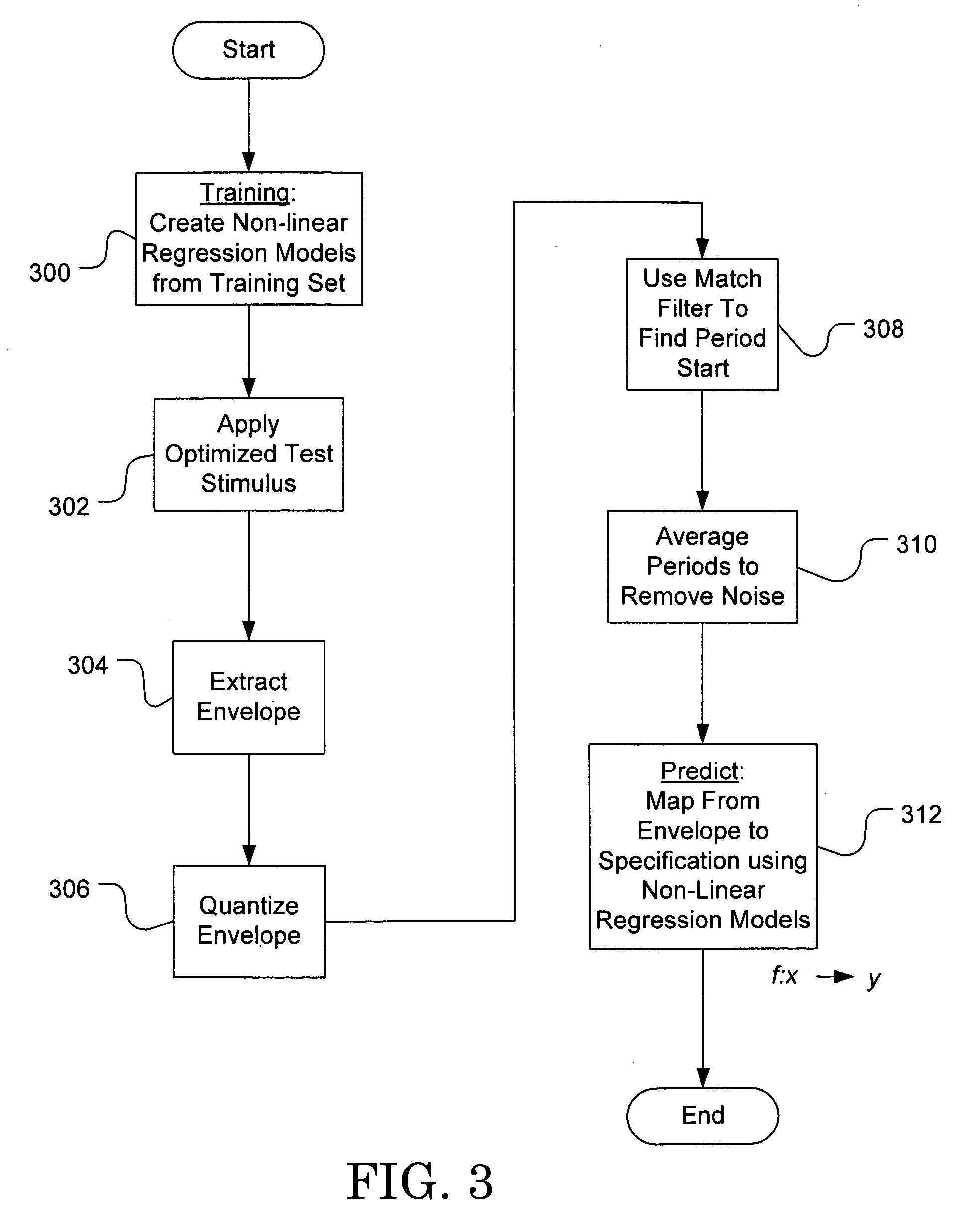Production test technique for RF circuits using embedded test sensors
a technology of test sensor and production test, which is applied in the direction of error detection/correction, resistance/reactance/impedence, instruments, etc., can solve the problem that the test technique requires much smaller test time and expensive measurement equipment, and achieve accurate diagnosis of sub-module specifications and small test time
- Summary
- Abstract
- Description
- Claims
- Application Information
AI Technical Summary
Benefits of technology
Problems solved by technology
Method used
Image
Examples
Embodiment Construction
[0014] In the preferred embodiments of the invention, a built-in self test technique is implemented for extracting specifications of circuits and systems for wireless transceivers. With minimal external tester support, high quality built-in testing is performed with significant reduction of overall test time. The technique consists of deploying test sensors (envelope detectors) embedded inside the system and measuring the envelope of the output signal of the circuit responding to a single, optimized test stimulus. The envelope of the test response signal of the RF circuit is a relatively low frequency signal compared to the nominal operating frequency of the RF circuit under test, and can therefore be easily sampled using low-sampling-rate analog-to-digital converters. The output of the embedded sensor is highly correlated with the specifications of the circuit under test. Based on the test sensor output signals, the target specifications for individual modules as well as the system...
PUM
 Login to View More
Login to View More Abstract
Description
Claims
Application Information
 Login to View More
Login to View More - R&D
- Intellectual Property
- Life Sciences
- Materials
- Tech Scout
- Unparalleled Data Quality
- Higher Quality Content
- 60% Fewer Hallucinations
Browse by: Latest US Patents, China's latest patents, Technical Efficacy Thesaurus, Application Domain, Technology Topic, Popular Technical Reports.
© 2025 PatSnap. All rights reserved.Legal|Privacy policy|Modern Slavery Act Transparency Statement|Sitemap|About US| Contact US: help@patsnap.com



